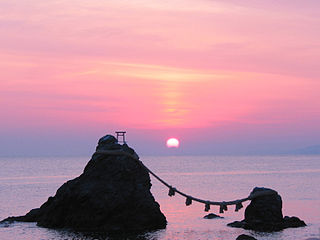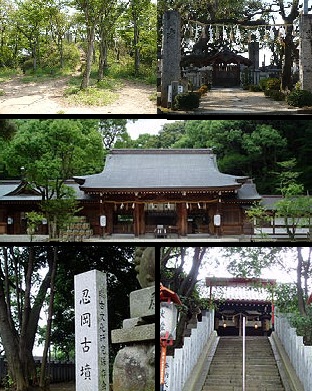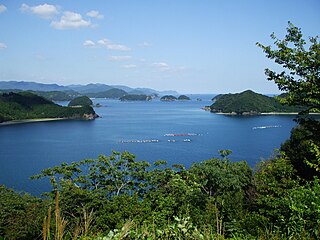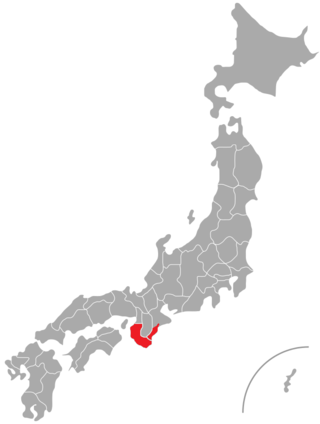
Mie Prefecture is a prefecture of Japan located in the Kansai region of Honshu. Mie Prefecture has a population of 1,781,948 and has a geographic area of 5,774 square kilometers (2,229 sq mi). Mie Prefecture is bordered by Gifu Prefecture to the north, Shiga Prefecture and Kyoto Prefecture to the northwest, Nara Prefecture to the west, Wakayama Prefecture to the southwest, and Aichi Prefecture to the east.

Owase is a city located in Mie Prefecture, Japan. As of 1 August 2021, the city had an estimated population of 16,910, in 9,177 households. The population density was 88 persons per km2. The total area of the city was 192.71 square kilometres (74.41 sq mi).

Shijōnawate is a city located in Osaka Prefecture, Japan. As of 31 January 2022, the city had an estimated population of 54,969 in 246822 households and a population density of 2900 persons per km2. The total area of the city is 18.69 square kilometres (7.22 sq mi).

Ōdai is a town located in Mie Prefecture, Japan. As of 30 June 2021, the town had an estimated population of 8,847 in 4,125 households and a population density of 24 persons per km2. The total area of the town was 362.86 square kilometres (140.10 sq mi).
Miyama was a town located in Kitamuro District, Mie Prefecture, Japan.

Japan > Mie Prefecture > Kitamuro District

Kihoku is a town located in Kitauwa District, Ehime Prefecture, Japan. As of 31 August 2022, the town had an estimated population of 9,614 in 4891 households, and a population density of 40 persons per km². The total area of the town is 241.88 square kilometres (93.39 sq mi).The name of the town is derived from the town's location to the north, 北, of Mt. Onigajō "鬼が城."

Kihoku is a town located in Mie Prefecture, Japan. As of 1 August 2021, the town had an estimated population of 15,077 in 7876 households and a population density of 59 persons per km². The total area of the town was 257.01 square kilometres (99.23 sq mi).

Taiki is a town located in Watarai District, Mie Prefecture, Japan. As of 1 August 2021, the town had an estimated population of 7,934 in 3903 households and a population density of 34 persons per km². The total area of the town was 233.54 square kilometres (90.17 sq mi).
Kihoku is a place name in Japan:

National Route 260 is a national highway connecting Shima, Mie and Kihoku, Mie in Japan.

Kii-Nagashima Station is a passenger railway station in located in the town of Kihoku, Kitamuro District, Mie Prefecture, Japan, operated by Central Japan Railway Company.

Minose Station is a passenger railway station in located in the town of Kihoku, Kitamuro District, Mie Prefecture, Japan, operated by Central Japan Railway Company.

Funatsu Station is a passenger railway station in located in the town of Kihoku, Kitamuro District, Mie Prefecture, Japan, operated by Central Japan Railway Company.

Aiga Station is a passenger railway station in located in the town of Kihoku, Kitamuro District, Mie Prefecture, Japan, operated by Central Japan Railway Company.

National Route 422 is a national highway of Japan connecting Ōtsu, Shiga and Kihoku, Mie in Japan, with a total length of 163 km (101.28 mi).
Funatsu Station may refer to:

Kasagami-Kurohae Station is a railway station on the privately operated Chōshi Electric Railway Line in Chōshi, Chiba, Japan.

Tokawa Station is a railway station on the privately operated Chōshi Electric Railway Line in Chōshi, Chiba, Japan.

The Kishū dialect is a Kansai dialect of Japanese spoken in the former province of Kino, in what is now Wakayama Prefecture and southern Mie Prefecture. In Wakayama Prefecture the dialect may also be referred to as the Wakayama dialect.


















